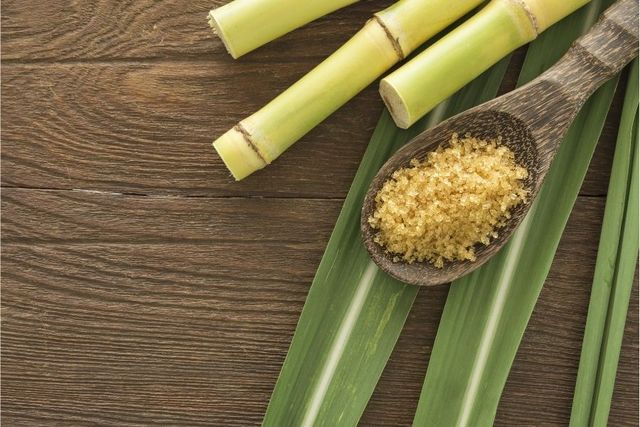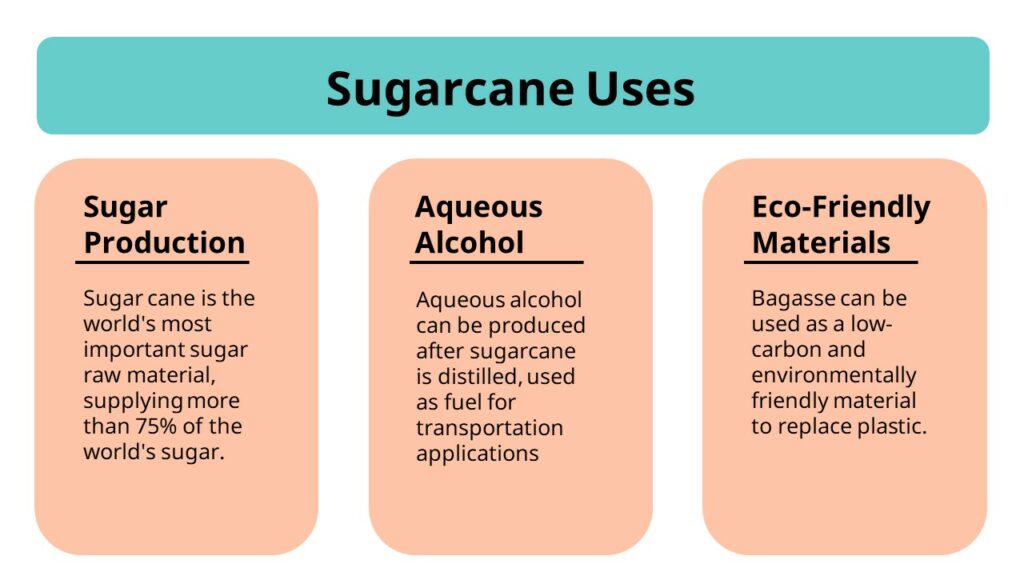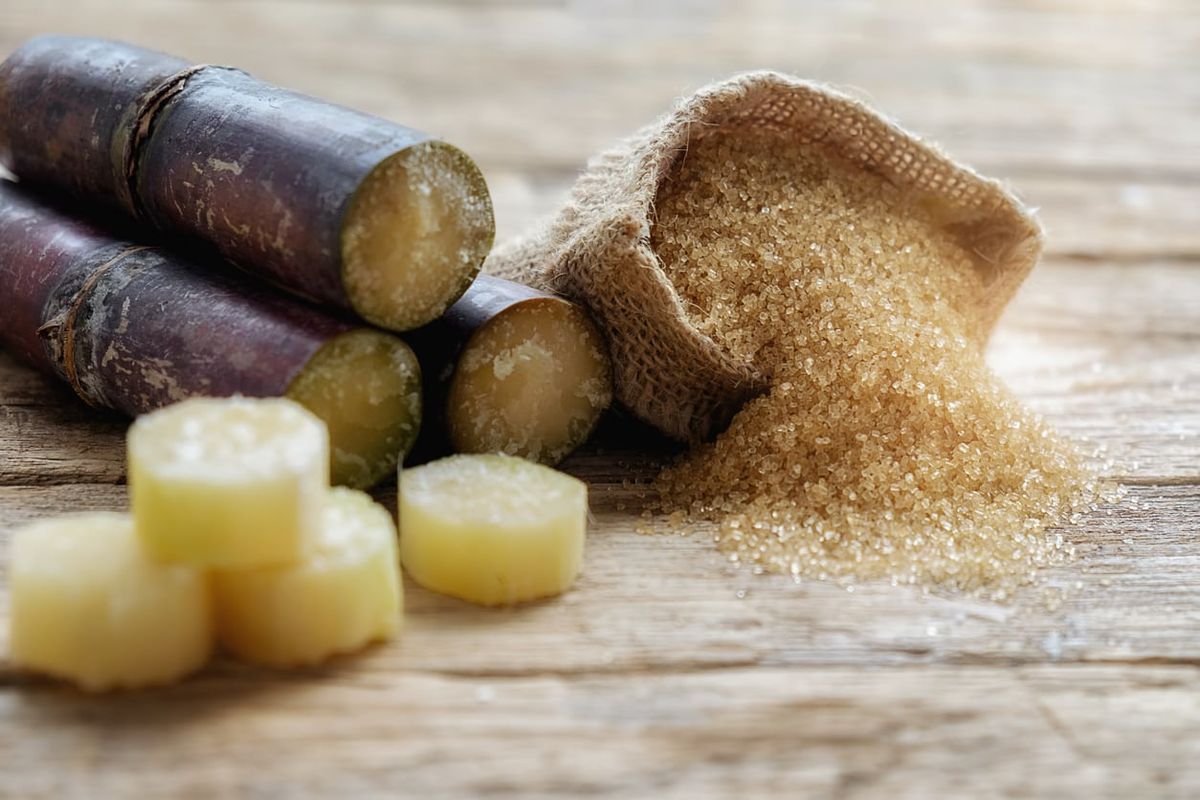Recognizing How Sugar Canes Job: What Are Sugar Canes Utilized For in Food and Beyond?
Sugar walking canes are indispensable to numerous elements of both industrial and culinary practices. Their flexibility permits them to be changed into sugar, beverages, and even biofuels. As one discovers the trip from growing to handling, the diverse applications of sugar canes expose a complex interplay between agriculture and industry. The ramifications of sugar walking cane manufacturing extend past simple energy, increasing concerns about environmental sustainability and economic effect.

The Background and Origin of Sugar Canes
Often taken for granted in contemporary diet plans, the history and origin of sugar walking canes reveal an intricate journey that covers thousands of years. Indigenous to Southeast Asia, sugar walking stick was first grown around 8000 BCE, with its wonderful juice becoming very valued by very early civilizations. By the first millennium advertisement, it spread to India, where it was improved into crystallized sugar, a remarkable advancement that transformed its usage and profession. The intro of sugar cane to the Mediterranean happened around the 7th century, many thanks to Arab traders, that recognized its financial potential.During the Age of Exploration, European homesteaders developed sugar haciendas in the Caribbean, considerably impacting worldwide trade. By the 17th century, sugar came to be a standard product, sustaining economies and influencing social frameworks. The tale of sugar walking canes is intertwined with farming, commerce, and cultural exchanges, noting its relevance fit modern-day financial systems and cooking methods.

Farming and Collecting Practices
The cultivation and harvesting of sugar canes include several essential practices that establish the high quality and return of the crop - What Are Sugar Canes Used For. Crucial element include reliable soil preparation strategies, exact planting approaches, and reliable gathering methods. Understanding these practices is crucial for enhancing manufacturing and making certain sustainability in sugar walking stick farming
Soil Prep Work Methods
Effective soil prep work techniques are necessary for effective sugar cane farming, as they lay the structure for healthy and balanced development and ideal yield. The process starts with soil testing to examine nutrient degrees and pH equilibrium, enabling tailored changes. Tilling and raking are then employed to freshen the dirt and damage up compaction, enhancing root penetration. Integrating raw material, such as garden compost or well-rotted manure, enhances soil fertility and framework. Furthermore, proper drain systems are crucial to stop waterlogging, which can hinder walking stick growth. Cover cropping might likewise be utilized to reduce weeds and enhance dirt wellness. These techniques jointly assure that sugar cane has the best environment to prosper, resulting in durable plant wellness and increased performance.
Planting and Development
Successful growing and growth techniques are crucial for optimizing the yield of sugar walking stick. The process begins with picking healthy and balanced seed walking canes, which are sectors of fully grown stalks rich in buds. These seed walking canes are commonly planted in well-prepared dirt, ideally at a deepness of 4 to 6 inches, making sure adequate wetness and aeration. Sugar cane thrives in cozy environments with enough sunshine and needs constant irrigation, particularly during dry spells. Fertilizing with nitrogen, phosphorus, and potassium is vital to advertise durable development. Weed control is additionally essential, as competitors can hinder growth. Normal monitoring of plant health and soil conditions permits for prompt interventions, eventually bring about an effective crop that fulfills market demands.
Collecting Techniques
Gathering sugar walking stick needs careful planning and execution to ensure maximum return and high quality. Usually, the harvest happens when the walking cane gets to perfect sugar content, usually between 12 to 18 months after planting. There are 2 primary methods: guidebook and mechanical harvesting. Hands-on harvesting involves laborers using machetes to cut the stalks at ground degree, ensuring very little damages to the plant and soil. On the other hand, mechanical harvesting uses specific equipments that reduced, cut, and move the walking cane, boosting efficiency and reducing labor expenses. Nevertheless, mechanical techniques can cause greater soil compaction and loss of nutrients. No matter of the technique, timely harvesting is important, as delays can cause decreased sugar quality and raised sensitivity to diseases and bugs.
Processing Strategies for Sugar Extraction
The handling of sugar walking stick is an essential phase in sugar manufacturing, encompassing several vital strategies - What Are Sugar Canes Used For. Gathered cane goes through juicing and crushing to remove its pleasant fluid. This juice after that proceeds through filtration and crystallization, transforming it into the sugar most generally used today
Gathering Sugar Walking Stick
Sugar walking stick collecting marks a vital stage in the production process, where timing and technique play crucial duties in taking full advantage of return. Commonly, the harvest occurs when sugar material is at its top, which differs based upon environment and development problems. Employees utilize customized equipment or manual devices to reduce the walking cane at the base, guaranteeing marginal damages to the plant. Proper technique is important; reducing too high can minimize the high quality and quantity of the sugar extracted later on. After reducing, the cane has to be moved promptly to refining facilities to stop perishing and sugar deterioration. The efficiency of the harvesting process substantially affects the total performance and profitability of sugar cane farming, making it a vital focus for producers.
Juicing and crushing
When sugar cane is harvested, the next crucial action entails squashing and juicing to remove the sweet fluid which contains sucrose. This procedure usually uses hefty machinery designed to squash the stalks, damaging down the fibrous structure and launching the juice. Rollers or mills apply significant stress, permitting the walking cane juice to stream out while dividing the coarse deposit, called bagasse. Once crushed, the cane is typically check my site based on a collection of pushing phases to make best use of juice extraction. The gathered juice is abundant in sugar and may have contaminations, which will be resolved in later handling steps. Overall, squashing and juicing are critical techniques that change harvested sugar walking cane into a liquid form ideal for more refinement.
Purification and Formation
Filtration and crystallization are essential processes in changing raw walking stick juice right into polished sugar. After extracting juice from smashed sugar walking sticks, the liquid consists of contaminations such as plant minerals, fibers, and proteins. To achieve purification, the juice goes through explanation, where heat and lime are contributed to precipitate impurities, which are then removed. The cleared up juice is then concentrated through dissipation to develop a thick syrup.Next, crystallization takes place, where sugar crystals create as the syrup cools. This procedure typically includes seeding the syrup with existing sugar crystals to promote uniform growth. The resulting crystals are separated from the staying molasses through centrifugation, yielding pure sugar. This refined item is after that dried out and packaged for numerous culinary usages.
Culinary Use Sugar Canes
While usually associated mostly with sweeteners, sugar walking sticks supply a functional series of culinary applications past their function in sugar manufacturing. Fresh sugar walking cane can be juiced, generating a pleasant, stimulating beverage appreciated in many exotic areas. This juice acts as a base for healthy smoothies and alcoholic drinks, adding a distinct flavor profile.Additionally, sugar walking cane syrup, originated from boiling down the juice, is utilized as an all-natural sweetener in different meals, from marinates to treats. The syrup gives a rich, caramel-like taste, boosting both tasty and pleasant recipes.In some foods, sugar walking cane stalks are barbequed or baked, giving a distinct smoky preference that matches veggies and meats. Sugar walking cane can be integrated into desserts, such as desserts and candies, where its sweet taste and coarse texture produce wonderful contrasts. In general, sugar canes add to both conventional and ingenious cooking productions throughout varied societies.
Industrial Applications Beyond Food
Beyond their culinary usages, sugar walking canes play a substantial duty in various commercial applications, adding to fields such as bioenergy, paper manufacturing, and bioplastics. The fibrous product of sugar walking stick is utilized in the manufacturing of biofuels, specifically ethanol, which acts as an eco-friendly energy source that minimizes dependancy on nonrenewable fuel sources. In the paper industry, bagasse, the coarse deposit left after juice extraction, is processed into pulp for paper and cardboard production, promoting lasting techniques by making use of waste. In addition, innovations in bioplastic technology have actually brought about the advancement of biodegradable plastics originated from sugar cane, using an environmentally friendly choice to conventional petroleum-based plastics. These industrial applications not only enhance the worth of sugar walking sticks yet also straighten with worldwide movements towards sustainability and renewable energies, illustrating their versatility beyond the kitchen area.

The Ecological Impact of Sugar Cane Manufacturing
The manufacturing of sugar cane, in spite of its numerous industrial benefits, presents substantial environmental obstacles. Deforestation is typically a repercussion, as large areas of land are gotten rid of to cultivate sugar cane, leading click reference to environment loss and biodiversity decrease. In addition, the intensive farming techniques linked with sugar walking cane cultivation can result in dirt deterioration and disintegration. The heavy usage of chemicals and fertilizers to optimize returns adds to water pollution, negatively impacting marine ecosystems.Moreover, sugar walking cane manufacturing is linked to raised greenhouse gas exhausts, particularly through land-use adjustments and the burning of cane areas before harvest. These techniques not just affect air high quality but also add substantially to environment change. Additionally, the water-intensive nature of sugar cane farming areas anxiety on regional water resources, influencing environments and areas reliant on these products. Attending to these environmental impacts is important for sustainable sugar cane production in the future.
Often Asked Concerns
Are There Wellness Benefits Associated With Consuming Sugar Walking Stick?
The inquiry of wellness advantages related to sugar walking cane usage highlights potential benefits. Sugar walking stick might offer hydration, vital minerals, and anti-oxidants, however small amounts is crucial as a result of its natural sugar material and possible health ramifications.
How Does Sugar Walking Stick Compare to Various Other Sweeteners Nutritionally?

Sugar walking stick provides natural sweetness, primarily comprising sucrose, while various other sugar differ in structure and caloric material. Contrasted to artificial choices, sugar walking stick offers minerals and vitamins, though it stays high in calories and carbohydrates.
Can Sugar Walking Cane Be Grown in Non-Tropical Regions?
Sugar cane primarily grows in exotic environments, requiring plentiful rainfall and cozy temperatures. While some non-tropical areas attempt farming, success is limited due to insufficient heat and expanding seasons, making large production challenging.
What Are the Typical Bugs or Diseases Influencing Sugar Canes?
Usual pests influencing sugar walking sticks include the sugarcane borer and aphids, while illness like fallen leave scald and red rot position substantial dangers. Effective management strategies are essential for keeping healthy and balanced sugar cane plants and making best use of returns.
How Does Sugar Walking Cane Impact Resident Economies?
The effect of sugar walking cane on local economic situations is substantial, providing job opportunity, improving agricultural markets, and adding to exports. Its cultivation supports local companies and improves area development with raised earnings and facilities renovations. Indigenous to Southeast Asia, sugar walking cane was very first cultivated around 8000 BCE, with its sweet juice ending up being a fantastic read extremely valued by early worlds. The introduction of sugar walking cane to the Mediterranean occurred around the 7th century, thanks to Arab traders, who identified its financial potential.During the Age of Exploration, European homesteaders developed sugar haciendas in the Caribbean, substantially influencing worldwide trade. The processing of sugar cane is an important phase in sugar manufacturing, incorporating several essential techniques. While frequently associated primarily with sugar, sugar canes provide a versatile range of culinary applications beyond their duty in sugar production. The heavy use of pesticides and plant foods to maximize yields contributes to water pollution, adversely impacting water ecosystems.Moreover, sugar walking stick production is connected to raised greenhouse gas discharges, specifically via land-use changes and the burning of cane areas prior to harvest.